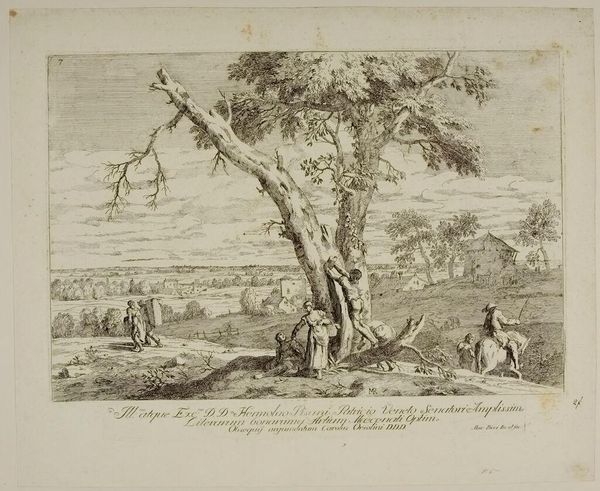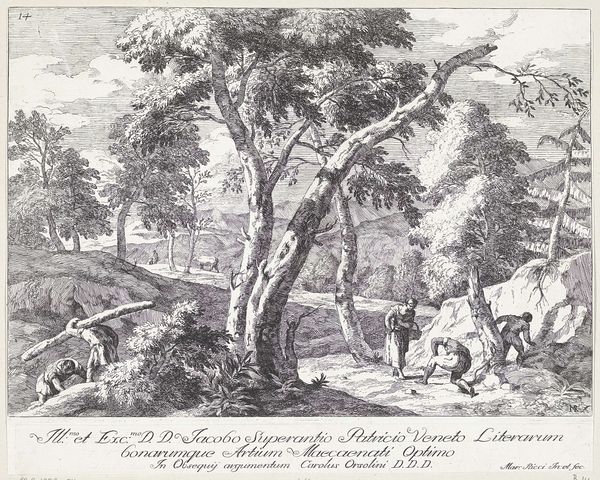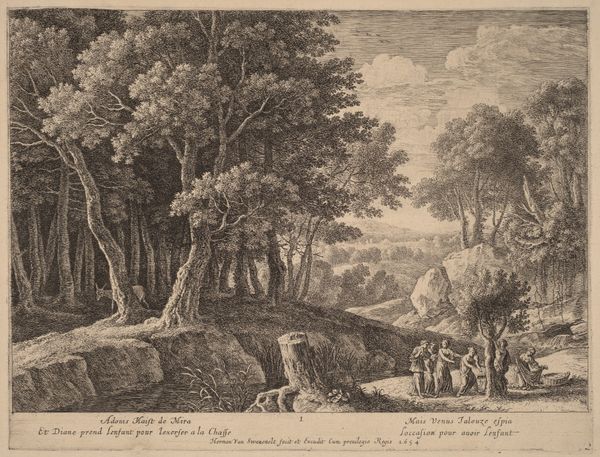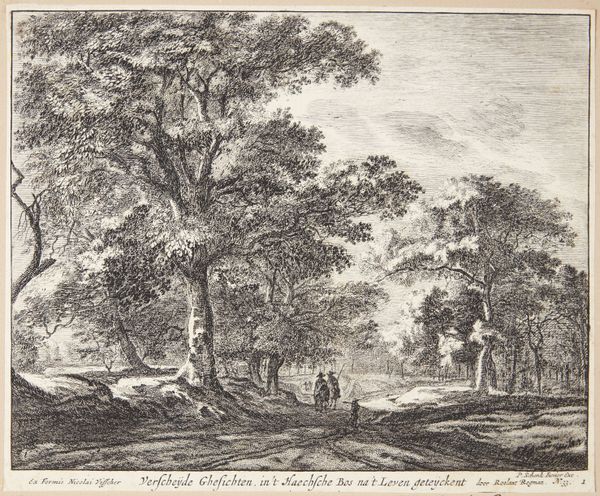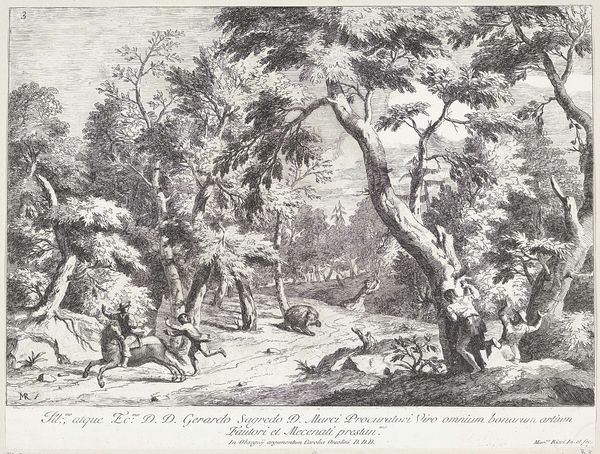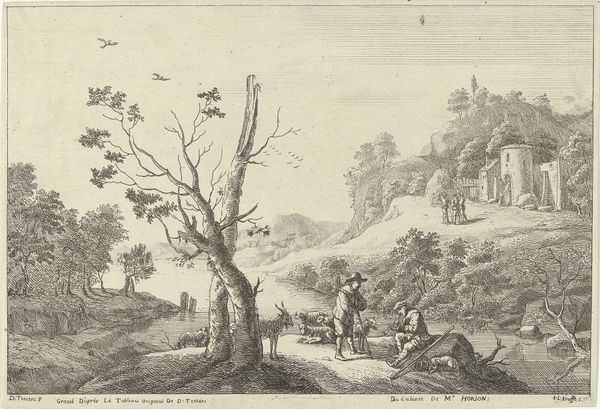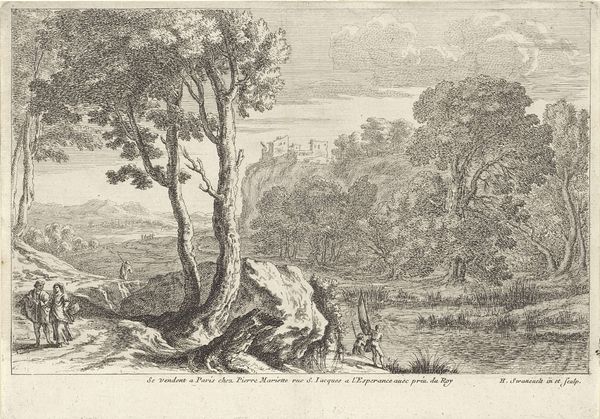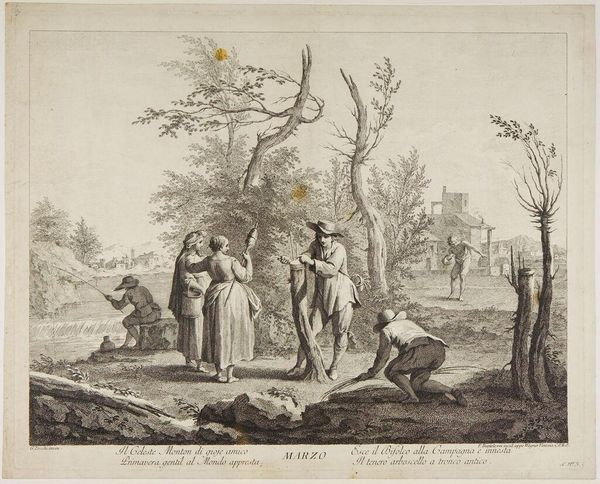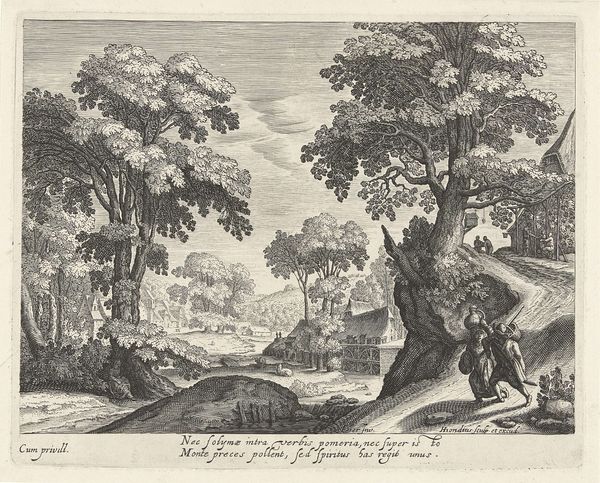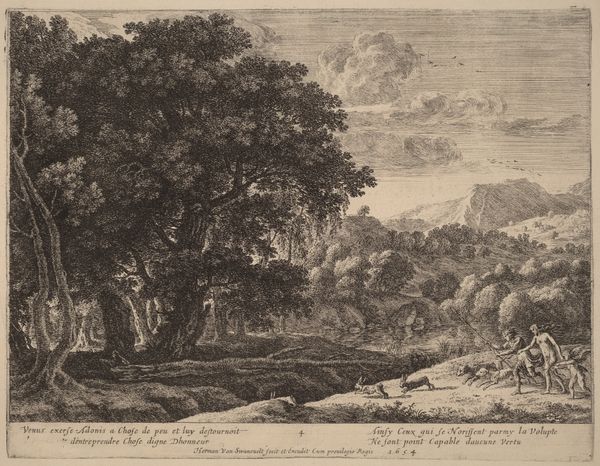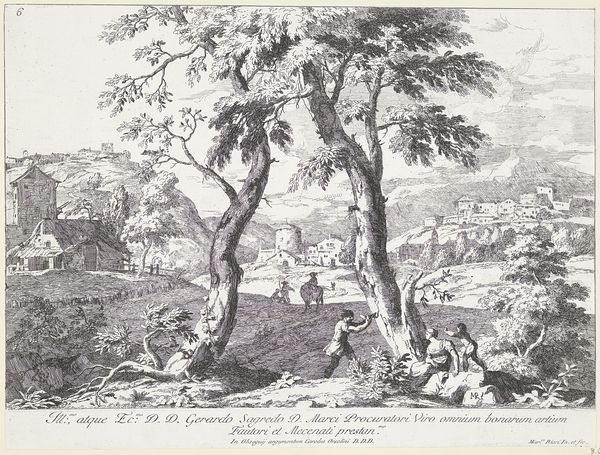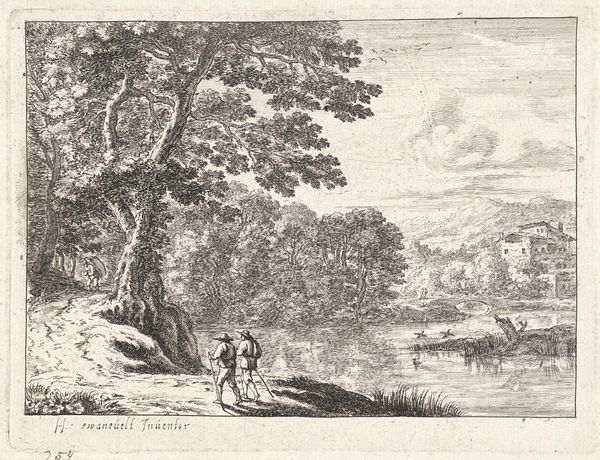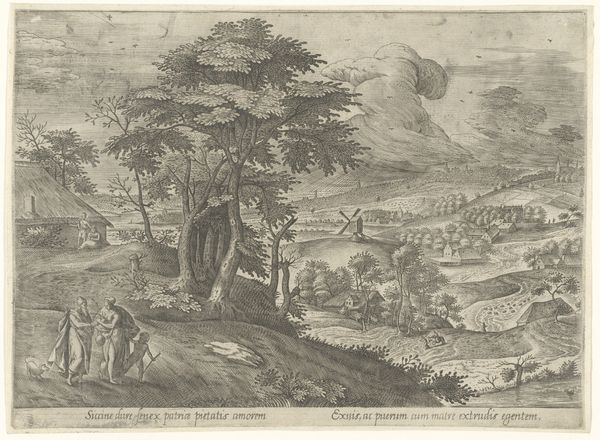
drawing, etching, pen
#
drawing
#
baroque
#
pen sketch
#
etching
#
pencil sketch
#
landscape
#
pen
Dimensions: height 322 mm, width 435 mm
Copyright: Rijks Museum: Open Domain
Curator: Let’s spend a few minutes with Marco Ricci's etching, "Landschap met tweestammige boom," or "Landscape with a Two-Trunked Tree," created around 1730. Editor: My first impression is the incredibly fine detail achieved through the etching process. The tree dominates the foreground, a striking image in shades of grey. You can almost feel the rough texture of the bark, such skilled use of materials. Curator: It’s a remarkable landscape, especially when you consider Ricci's social context. Venice at this time was evolving into a tourist destination, and vedute, or views of the city and surrounding countryside, were highly prized by wealthy patrons. Ricci responded to this demand. Editor: Right, it's about material production for that market, but look closely. While a typical picturesque view presents nature tamed and beautiful, this tree feels a little wild, almost broken. There’s a starkness. What are those figures doing at the base of it? Curator: Good eye! This isn’t just a simple landscape. Ricci often incorporated genre elements into his scenes. See the group resting and those walking into town on the left? This connects with theatre. These characters enrich the print and offered something novel. It broadens appeal, reflecting evolving social tastes and interests. Editor: Fascinating! And there’s that figure seemingly climbing into the tree's hollow. Considering the printmaking process, I'm thinking of the division of labour involved, the decisions about line weight, how to convey shadow. This would all add layers of interest and impact its appeal, right? Curator: Precisely! The layering creates depth, a journey for the eye through the composition and helps to meet the needs of the market to depict both place and culture. Editor: It’s no longer just a static object, it's the fusion of labour, intent, social need and material potential that breathes life into this print, which is all tied together, I believe. Curator: It's a fascinating piece, providing a window into Venice's art market and culture of the early 18th century, and offers insights into the role artists like Ricci played in shaping that cultural landscape. Editor: It's the means by which these representations become material and enter the social world of images, shaping taste and circulating ideologies about land and leisure.
Comments
No comments
Be the first to comment and join the conversation on the ultimate creative platform.
